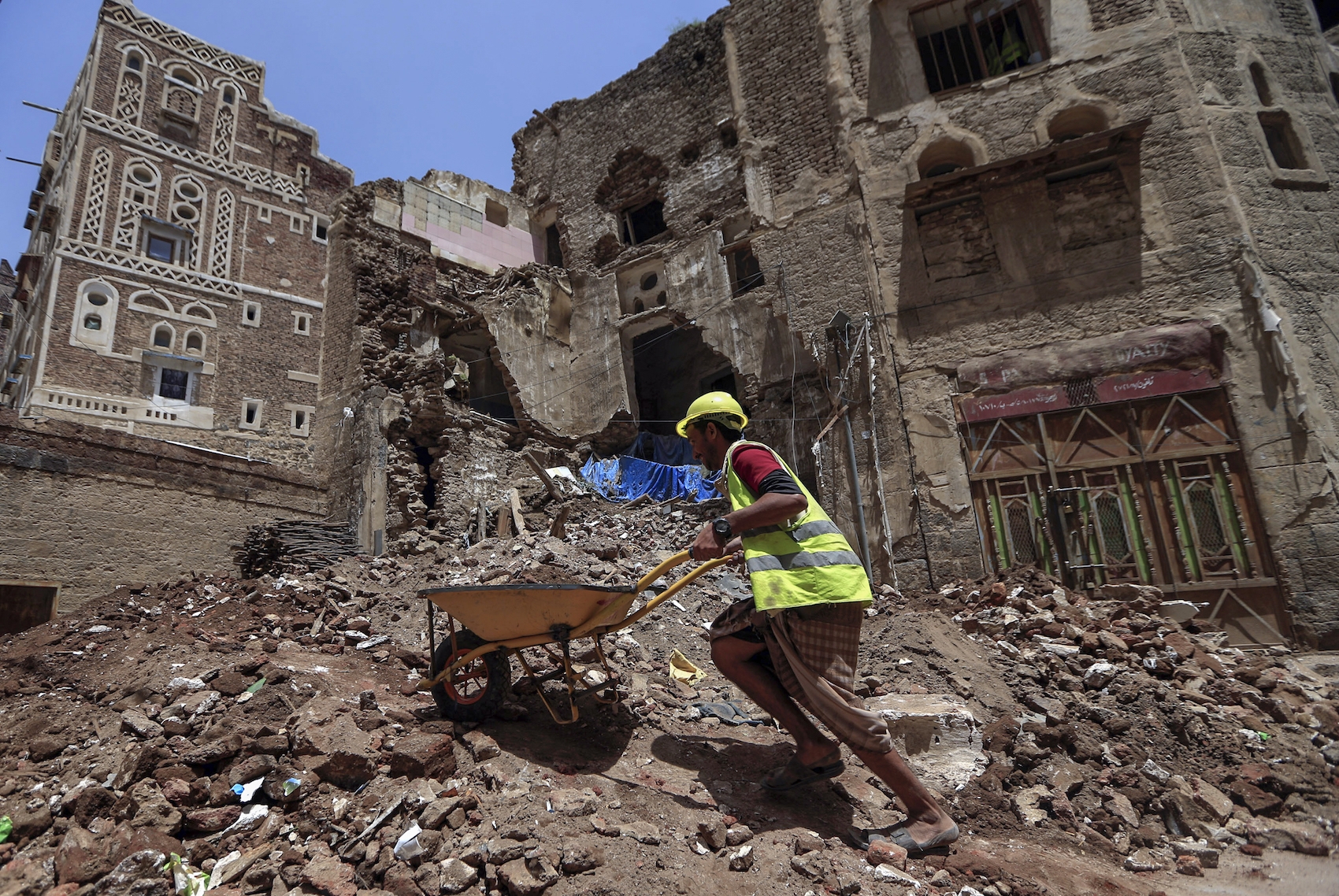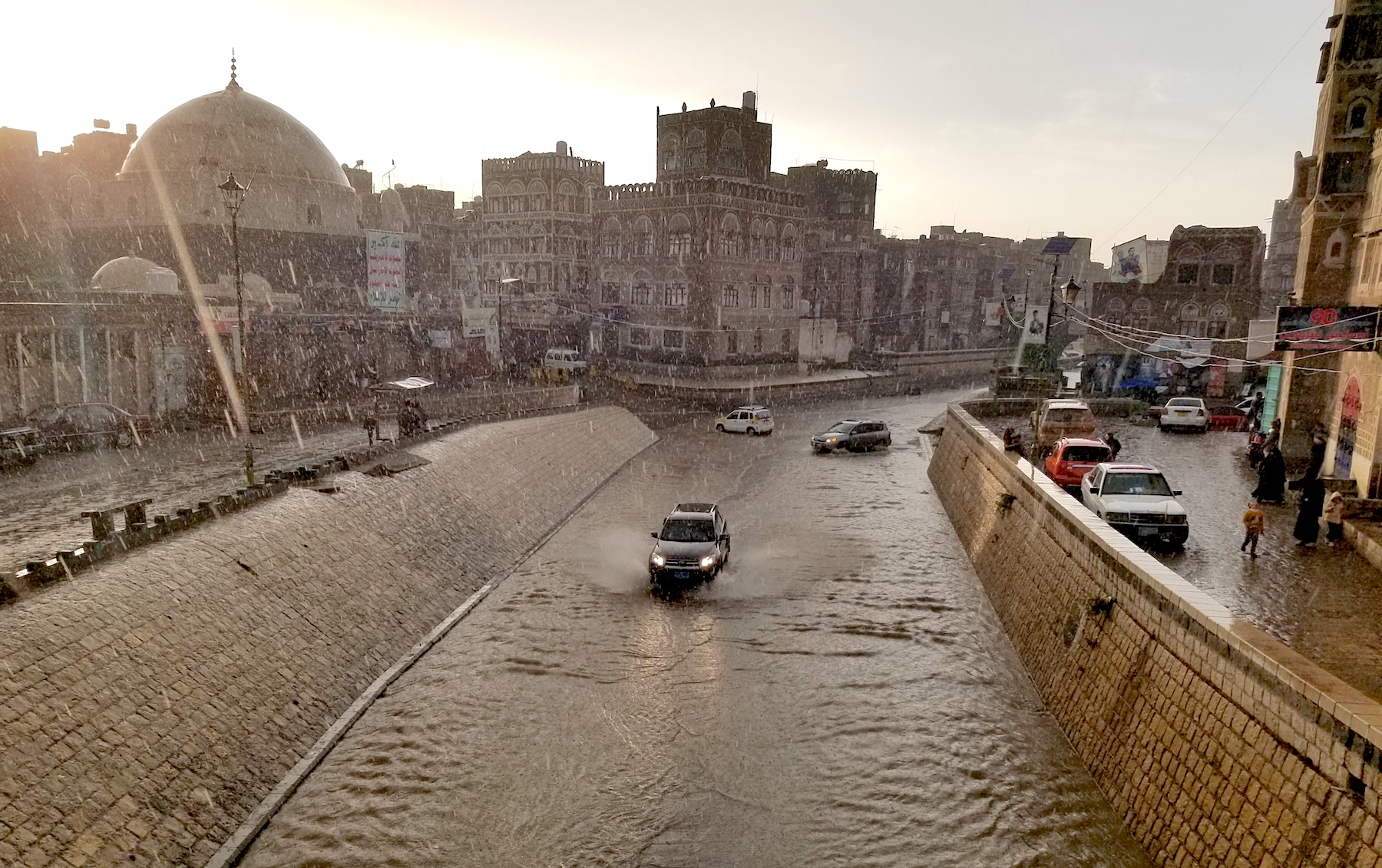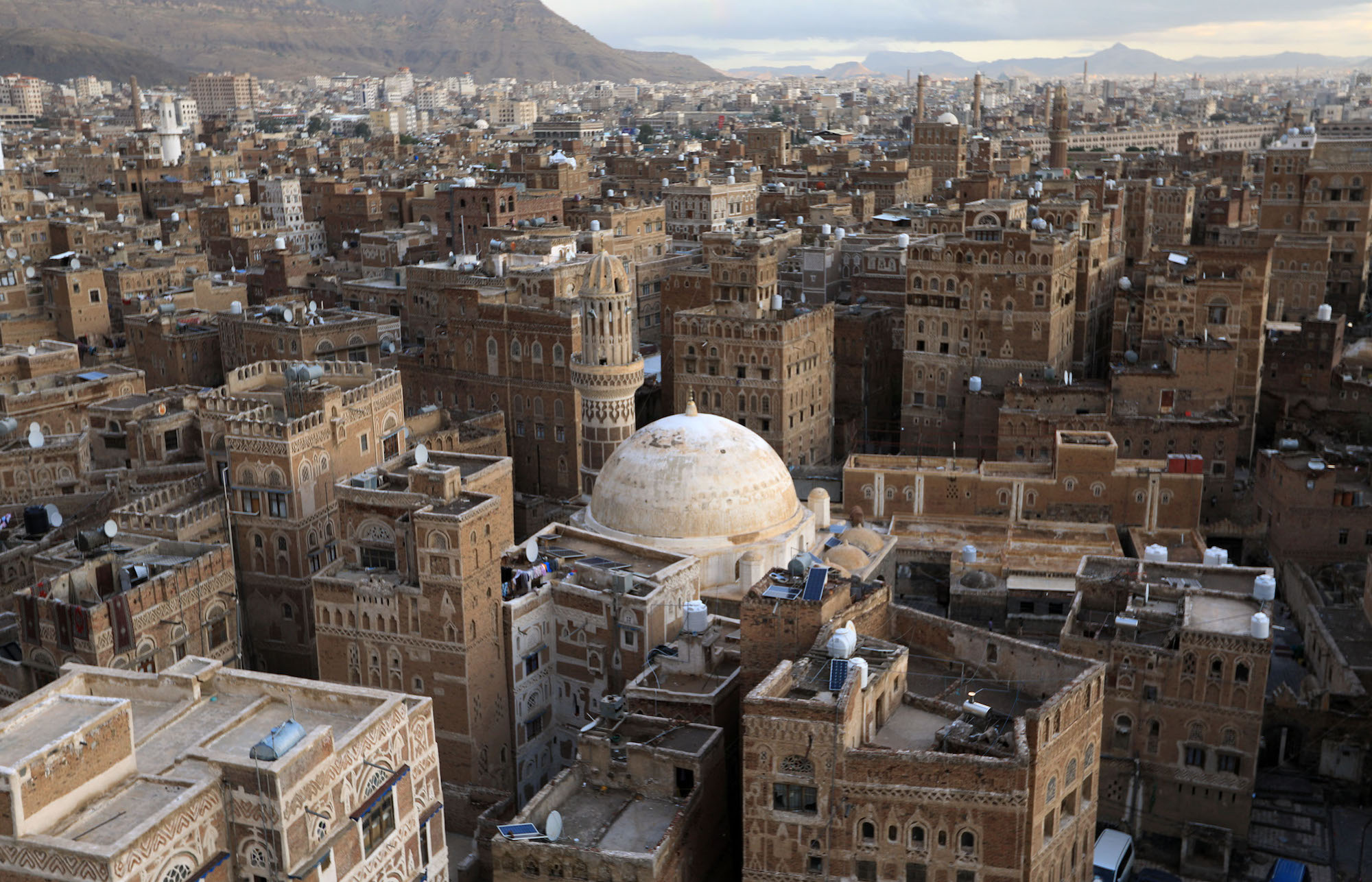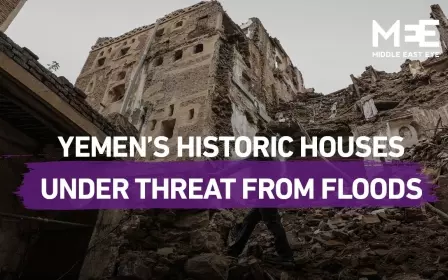Historic houses in Sanaa's Old City on brink of collapse after heavy rains

Months of torrential rains in Yemen have killed more than 100 people and pushed many buildings in the Unesco-listed Old City of Sanaa to the brink of collapse.
At least 131 lives have been lost after floods washed away the tents and houses of displaced people in Sanaa and surrounding provinces, the Ministry of Public Health and Population said in a statement on 10 August.
It said 124 others were injured and many were still missing and unaccounted for.
Around 5,000 of the towering buildings in the Old City of Sanaa have leaky roofs, and 107 have partially collapsed roofs
- Aqeel Sales Nassar, National Committee for Historic Cities Preservation
The persistent rains, which began in April, have damaged hundreds of homes, including many of the mud houses in Sanaa's Old City that were built before the 11th century and are famous for their decorated facades.
Around 5,000 of the towering buildings in the old city have leaky roofs, and 107 have partially collapsed roofs, according to Aqeel Sales Nassar, deputy head of the National Committee for Historic Cities Preservation.
New MEE newsletter: Jerusalem Dispatch
Sign up to get the latest insights and analysis on Israel-Palestine, alongside Turkey Unpacked and other MEE newsletters
The committee has called on the United Nations' conservation agency to urgently intervene to save the Old City, which was designated a Unesco World Heritage Site in 1986 and described as "an outstanding example of a homogeneous architectural ensemble reflecting the spatial characteristics of the early years of Islam".
"Today, this global city is facing a real catastrophe that threatens its existence," the committee stated.
Unesco acknowledged that the damage was endangering the lives of the inhabitants of historic centres across Yemen.
In a statement, the agency vowed to safeguard Yemen's cultural heritage "with a focus on urban rehabilitation of private houses and capacity building for the local authorities".
"The European Union funded cash-for-work project has been designed based on the state of the historical building in the four cities of Aden, Sanaa, Shibam and Zabid over a period of three years and a particular focus on repairs of roofs, walls and foundations," it added.
Different priorities
Due to its world heritage status, any changes made to the Old City's ancient houses might lead to it being taken off the Unesco list, according to a source at the culture office in Sanaa.
"The restoration of houses with a modern version isn't allowed in the Old City as this is a part of history of the entire Yemen, more than just the fortune of one person," the source, who wished to remain anonymous as he was not authorised to speak to the media, told MEE.
He acknowledged that due to the dire situation on the ground, some residents prioritise building shelters over preserving the city's heritage.
"I know people are suffering, and they are facing a horrific time seeing their homes collapse with no one helping them. But we have called on Unesco and hope they will respond soon."
Authorities would prefer not to take any action in the Old City until Unesco intervenes, so that everything is carried out under the agency's supervision, he said.
'We need help'
Across the Old City, residents try to repair their homes with no help from authorities, mindful that any structural change to the historic architecture could strip the city of its coveted Unesco designation.
The city’'s multi-storey houses, built from gypsum (a sulphate used in many forms of plaster) and fired bricks, have been inhabited for more than 2,500 years.
To preserve such heritage, residents re-enforce their houses with mud for the walls, wood for the roof, and tarpaulines for protection from the weather's elements.
"We are proud to be residents of this historical city, where you can find both good people and deep history," Ahmed Sanhani told Middle East Eye.
"However, as you can see, the Old City is witnessing some of its worst days, with rains constantly damaging the old houses, and we can't do anything to stop it."
In some areas, security forces are standing by to warn people not to go near damaged houses, which could crumble suddenly.
"Our safety is first, so the occupants of the affected houses have left their homes in case they collapse," Sanhani said.
He called on Unesco to restore the old houses that cannot withstand heavy rains, as they are not allowed to repair or rebuild with modern materials like cement and stones.
'I hope Unesco intervenes before more people lose their homes, or die under the ruins of their homes'
- Ahmed Sanhani, Sanaa resident
Exacerbating the situation, Yemen's civil war and economic crisis has left many people without any source of income, so without assistance, many residents will not be able to rebuild their homes, he said.
"We want to preserve our history and we believe in it, so we are calling on international organisations to intervene and help us," Sanhani said.
"Otherwise, many people in the Old City will find themselves without shelter.
"Some people had demolished their houses over the last few years and illegally built modern homes. At the time, we blamed them for doing so, but we now think they did the right thing.
"I hope Unesco intervenes before more people lose their homes, or die under the ruins of their homes."
Neglected heritage
Since the war in Yemen began in 2015, Sanaa has seen its share of human casualties as well as irreversible damage to its historic landmarks.
The conflict, in which more than 100,000 people have been killed, has also wiped out the country's tourism industry.
"Tourists used to visit the Old City on a daily basis before the war, but nowadays we spend months without seeing any foreigners here," Essam Ghailan, a shopkeeper in the Old City, told MEE.
Before the war, authorities and international organisations would make an effort to restore old houses in historic neighbourhoods, he said. But those days were long gone, and he feared that more buildings might collapse in the near future.
Authorities have blamed illegal construction in the flood streams, poor urban planning, and years of neglect for exacerbating the destruction in the Old City brought on by the heavy rains.
Ghailan recalled the days when tourists from all over the world would visit the Old City, take pictures and buy antique gifts. But after 2015 they stopped coming due to safety concerns, and now he would only see a few Yemeni visitors from time to time.
The lack of steady income, as well as the insecure housing, has prompted some residents to leave the Old City.
"They are not willing to live in old houses that may collapse on them any time," Ghailan said.
This article is available in French on Middle East Eye French edition.
Middle East Eye delivers independent and unrivalled coverage and analysis of the Middle East, North Africa and beyond. To learn more about republishing this content and the associated fees, please fill out this form. More about MEE can be found here.








